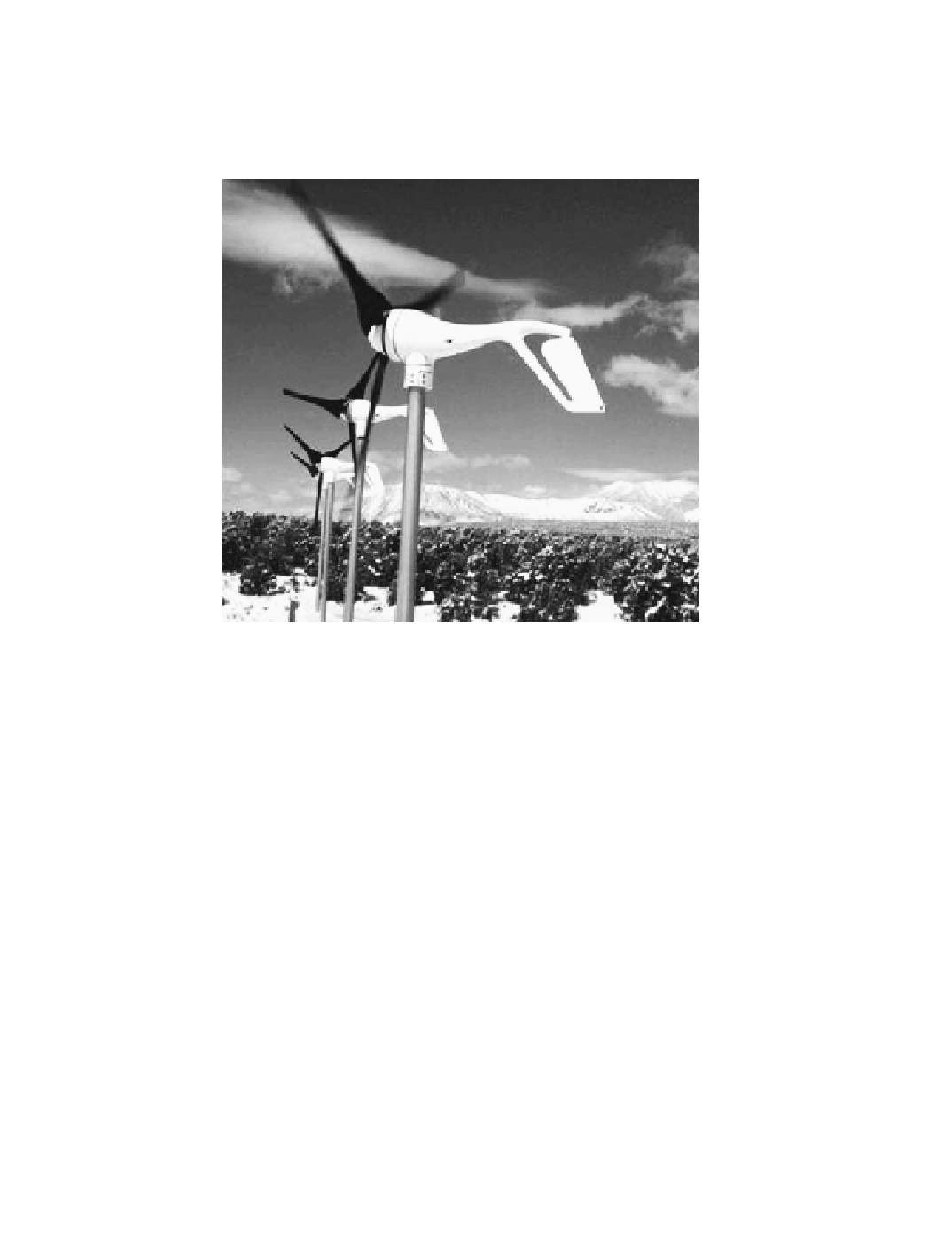Environmental Engineering Reference
In-Depth Information
capacity came from turbines manufactured by U.S. companies, including but not limited to
Southwest Windpower
(see Fig. 4-29),
Bergey Windpower, Wind Turbine Industries, Enteg-
rity Wind Systems
, and
Distributed Energy Systems
. This was a 4 percent growth in annual
sales—in capacity terms—relative to 2006, yielding a cumulative installed capacity of roughly
55 to 60 MW of distributed wind power in the United States in this small-scale size.
Figure 4-29. Small-scale wind power plant with four 400-W Southwest Windpower Air
X turbines.
(
Courtesy of National Renewable Energy Laboratory
)
Net metering,
also called
net billing
, is a policy implemented by some states and electric
utilities to ensure that any excess electricity produced by an on-site generator can be sent
back into the utility system for fair credit. This excess generation can cause a homeowner's
electric meter to spin backwards, indicating essentially negative electricity usage and ef-
fectively banking excess power production. Net metering allows the utility customer to be
charged only for any net consumption of electricity. Since a single electric meter is used to
measure in and out flows, the customer automatically receives compensation from the utility
at the full retail electricity rate for any excess electricity produced.
Impediments to Commercial Small-Scale Wind Turbines
Initially, the manufacturers of small-scale wind turbines operated at a significant dis-
advantage in the United States because of competition with solar photovoltaic systems that
had larger federal financial incentives for similar applications. That problem was resolved
recently by the
Emergency Economic Stabilization Act
of 2008. This act contained provi-
sions for an ITC of 30 percent of the cost of a small wind system (rated not more than 00 kW
and up to $4,000) that is placed in service before December 3, 206. Both wind and solar
technologies now have comparable incentives.

Search WWH ::

Custom Search